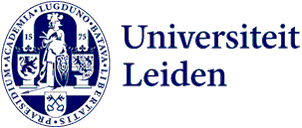
Conference unravels the mystery of collecting, preserving and displaying
Why and how do people collect things? Why does a museum display one object and not another? These questions are at the heart of the interdisciplinary research programme Museums, Collections and Society. The programme is holding a conference for scholars and the general public on 5 and 6 July.
‘People often say that you go to a museum to learn something, but I don’t think that’s entirely accurate’, says Pieter ter Keurs, professor and head of the interdisciplinary research programme Museums, Collections and Society. ‘You go into the first gallery, look at the objects and read all the signs. Then you go to the second gallery, where you read half the descriptions. From there, you walk through the rest of the building and look around. The point is: even if you leave a museum without absorbing much factual information, you’re still impressed by the collection as a whole. Why is that?’
Perceptions
It is questions like these – why we collect, how objects are displayed in a museum, how a collection makes visitors feel – that underpin the Museums, Collections and Society programme. Its researchers work from many perspectives to examine the choices people make to collect objects, the ways in which museums display those objects and the perceptions people gain about the past and present. Scholars and museum professionals will discuss these topics at the conference (working language: English) on 5 and 6 July. And make no mistake: the conference will touch on pressing, topical issues that affect us all.
Ukraine and colonial heritage
For example, how do we safeguard heritage in the war zone in Ukraine? Pieter ter Keurs does not mince his words on the subject. ‘By plundering churches and museums in Ukraine, the Russians are indirectly denying Ukrainian identity. It’s important to know what is happening there and how we can preserve as much of the heritage as possible.’
Colonial heritage will also receive plenty of attention at the conference. ‘With many objects, there’s a debate raging about whether they should be returned to their countries of origin. But in the decision-making process, it’s crucial to first obtain as much information about the object as possible: where exactly did it come from and what was its journey before it ended up in a museum? With the help of big data techniques, we now hope to map those journeys much more clearly and make careful considerations about how best to do justice to an object.’
Connoisseurs
Beyond the social issues, there is also much to enjoy for museum professionals, fellow researchers and modern art connoisseurs. For example, Ter Keurs recommends the Collecting in the 21st Century panel: how will we collect in the future and what role will digital tools play in this? ‘Obviously, that’s a fundamental question that will have a great deal of impact on the way museums will look’, he says.
Another panel will explore some well-known Dutch museums of modern art – such as the Stedelijk Museum Amsterdam and Museum Boijmans van Beuningen – that were founded in the first decades of the 20th century. ‘We will address the concept of “modernity”’, Ter Keurs explains. ‘What do we mean by modern art? And why exactly were these museums founded?’
Of course, Ter Keurs is also eagerly looking forward to the conference. ‘The art and objects we see in museums communicate something, often feelings and ideas that we can’t put into words. But what exactly? And how? These are the questions that have fascinated me all my life.’
Conference Museums, Collections and Society
When: 5 - 6 July 2023
Where: P.J. Veth building, Nonnensteeg 3, 2311 VJ Leiden
